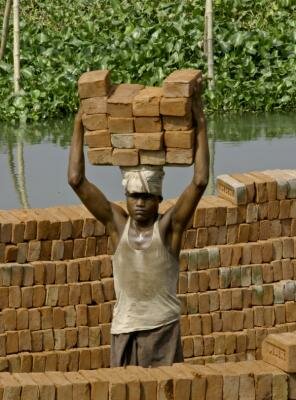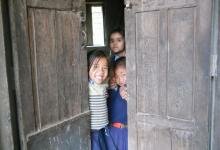One Less Brick In The Wall
Outdated kilns produce deadly emissions in Bangladesh, where bad air causes 15,000 premature deaths yearly in the capital alone.

The number of deaths caused by respiratory illnesses linked to air pollution, and the leading cause of premature mortality and morbidity in Bangladesh, could be halved if existing forms of brick kiln technology are replaced by cleaner alternatives, according to the World Bank and UN Development Programme (UNDP).
Experts describe brick-making in Bangladesh as a “footloose” industry in which operators fuel the country’s 8,000 outdated kilns with wood and low-grade coal, but also burn anything else – even old tyres and plastics – at great risk to the health of both the people and environment.
“A huge number of people are operating irresponsibly and passing on the cost to the public,” said UNDP Project Manager Khondker Reaz Rahman.
Modelled on a 150-year-old design of a trench dug into the ground covered by a crude structure, Bangladesh’s current brick kilns burn coal uncontrollably, creating extreme local and global emissions.
Bangladesh is rated as having some of the worst air quality in the world, causing an estimated 15,000 premature deaths a year in Dhaka alone, according to The Air Quality Management Project (AQMP).
Brick kilns around Dhaka are the main source of fine particulate matter – a mixture of extremely small solid and liquid droplets in the air commonly referred to as PM2.5 – which account for 40% of total emissions during their five-month operating period, said Maria Sarraf, senior environmental economist for the World Bank.
Only 2.5 microns in diameter, PM2.5 is also referred to as respirable particles because they penetrate the respiratory system further than larger particles.
Changing kiln technology
The World Bank is supporting the government in setting up 25 demonstration vertical shaft brick kilns (VSBK) across the nation, which emit 60-70% fewer particulates than traditional kilns. The first project is in Savar, a sub-district close to Dhaka.
VSBK was developed in China in the 1970s where it takes about eight tonnes of coal to produce 100,000 bricks, compared to 23 tonnes in Bangladesh.
The project is funded by a US$62.2 million grant for the Clean Air and Sustainable Environment (CASE) project established by the World Bank in 2009 to reduce emissions in two key polluting sectors by 2014 – brick kilns and transportation.
UNDP is also turning the dirty industry around with Hybrid Hoffman Kilns (HHK), which require far less energy than traditional kilns and can be used year round.
Fifteen demonstration projects are planned for the next five years and the plan is to attract a new type of financier from those traditionally associated with the industry.
“Very few investors in brick kilns are `clean’ people. The project aims to break the vicious cycle involving gangsters, political leaders and small-scale investors,” said UNDP Project Manager Khondker Reaz Rahman.
Half of Bangladesh’s brick kilns are operating illegally, as investors fail to obtain licenses and flout existing environmental laws, according to UNDP.
Government guidelines prohibit kilns within 3 kilometres of a settlement, but the Department of Environment’s director said this is “impractical” due to high population density. He believes cleaner alternatives offer the only sustainable alternative for the rapidly growing industry.
Prior to piloted alternatives, the only modifications made to existing kiln technology involved a 2004 government order to disperse pollution over a wider area by raising smokestacks.
“It’s very dangerous to live close to a brick kiln,” said Rahman. “Children and the elderly have less resistance to the health effects, such as asthma.”
According to CASE Consultant Swapan Kumar Biswas, the government plans to publish new guidelines with stronger enforcement mechanisms by the end of the 2011, along with updated data on the levels of airborne pollution.
This article was first published in IRIN.

















